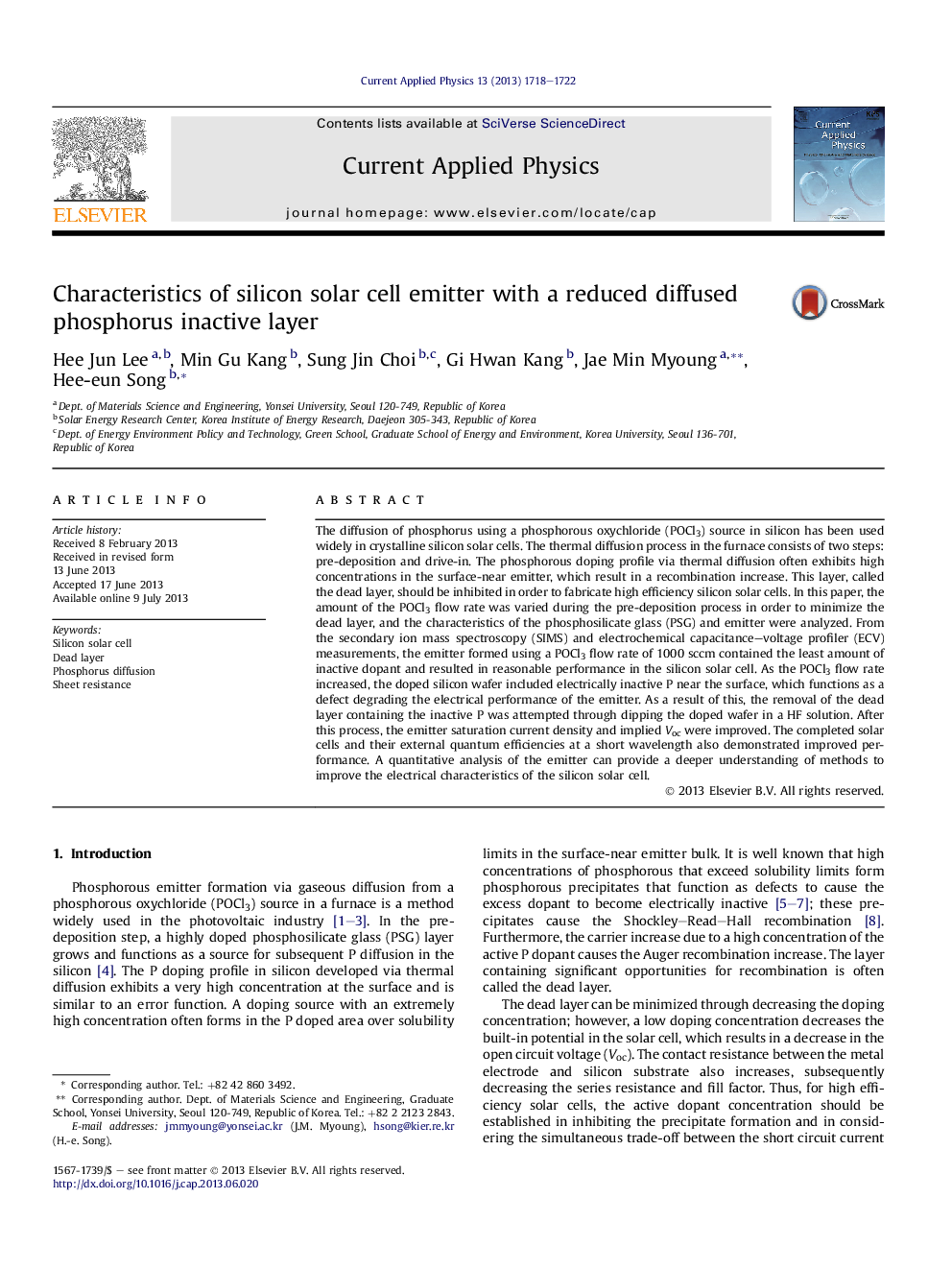| Article ID | Journal | Published Year | Pages | File Type |
|---|---|---|---|---|
| 1785991 | Current Applied Physics | 2013 | 5 Pages |
•Phosphorous doping profile exhibits high concentrations in surface-near emitter.•POCl3 amount was varied during pre-deposition process to minimize the dead layer.•Dead layer removal improved the electrical characteristics of silicon solar cell.
The diffusion of phosphorus using a phosphorous oxychloride (POCl3) source in silicon has been used widely in crystalline silicon solar cells. The thermal diffusion process in the furnace consists of two steps: pre-deposition and drive-in. The phosphorous doping profile via thermal diffusion often exhibits high concentrations in the surface-near emitter, which result in a recombination increase. This layer, called the dead layer, should be inhibited in order to fabricate high efficiency silicon solar cells. In this paper, the amount of the POCl3 flow rate was varied during the pre-deposition process in order to minimize the dead layer, and the characteristics of the phosphosilicate glass (PSG) and emitter were analyzed. From the secondary ion mass spectroscopy (SIMS) and electrochemical capacitance–voltage profiler (ECV) measurements, the emitter formed using a POCl3 flow rate of 1000 sccm contained the least amount of inactive dopant and resulted in reasonable performance in the silicon solar cell. As the POCl3 flow rate increased, the doped silicon wafer included electrically inactive P near the surface, which functions as a defect degrading the electrical performance of the emitter. As a result of this, the removal of the dead layer containing the inactive P was attempted through dipping the doped wafer in a HF solution. After this process, the emitter saturation current density and implied Voc were improved. The completed solar cells and their external quantum efficiencies at a short wavelength also demonstrated improved performance. A quantitative analysis of the emitter can provide a deeper understanding of methods to improve the electrical characteristics of the silicon solar cell.
